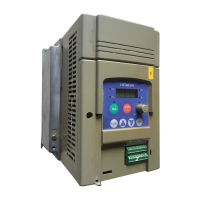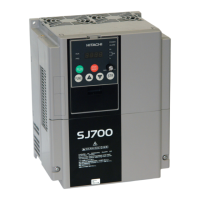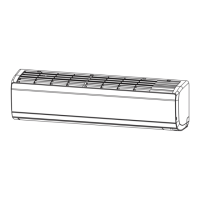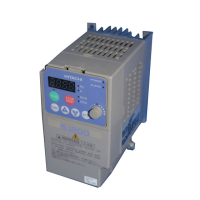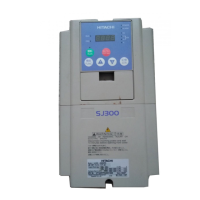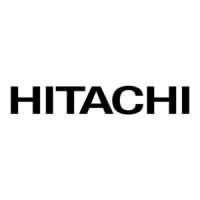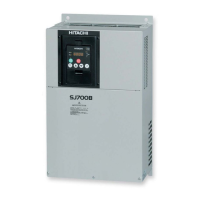Frequently Asked Questions
Getting Started
1–12
Frequently Asked Questions
Q. What is the main advantage in using an inverter to drive a motor, compared to
alternative solutions?
A. An inverter can vary the motor speed with very little loss of efficiency, unlike
mechanical or hydraulic speed control solutions. The resulting energy
savings usually pays for the inverter in a relatively short time.
Q. The term “inverter” is a little confusing, since we also use “drive” and “amplifier”
to describe the electronic unit that controls a motor. What does “inverter” mean?
A. The terms inverter, drive, and amplifier are used somewhat interchangeably
in industry. But there are subtle differences. A drive can refer to the motor,
the control electronics, or both. This term is used particularly when the
motor and electronics are integrated in the same housing. The term variable
speed drive can include many types of devices – anything that has a variable
speed output, which includes the Hitachi inverter. Amplifier more commonly
refers to a linear amplifier for servo motor control, or a stepper motor driver
IC. Finally, we use inverter to describe the Hitachi motor controller because
of the way the switching electronics alternately inverts or directly couples its
internal DC voltage bus to generate a variable AC output.
Q. Although the SJ100 inverter is a variable speed drive, can I use it in a fixed-speed
application?
A. A fixed speed application usually is a result of cost-sensitivity or negligible
benefits if variable speed were used (consumer products are examples). In
those cases, the power source connects directly to the motor (no special drive
needed). However, using a variable speed drive can benefit many type of
industrial and commercial motor applications, by providing controlled accel-
eration and deceleration, high torque at low speeds, and energy savings over
alternative solutions.
Q. Can I use an inverter and AC induction motor in a positioning application?
A. That depends on the required precision, and the slowest speed the motor will
must turn and still deliver torque. The SJ100 inverter will deliver full torque
while turning the motor at only 0.5 Hz (15 RPM). DO NOT use an inverter if
you need the motor to stop and hold the load position without the aid of a
mechanical brake (use a servo or stepper motion control system).
Q. Does the optional digital operator interface or the PC software (DOP Plus) provide
features beyond what is available from the keypad on the unit?
A. Yes. However, note first that the same set of parameters and functions are
equally accessible from either the unit’s keypad or from remote devices. The
DOP Plus PC software lets you save or load inverter configurations to or
from a disk file. And, the hand-held digital operator provides hard-wired
terminals, a safety requirement for some installations.
